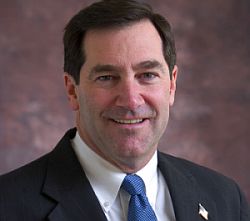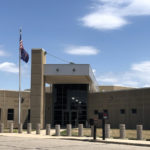 Washington, D.C. – As part of their ongoing efforts to address the nation’s growing heroin and prescription drug epidemics, U.S. Senators Joe Donnelly (D-IN) and Kelly Ayotte (R-NH) have introduced bipartisan legislation that aims to stop the abuse of prescription pain medication while also giving law enforcement the tools they need to prevent heroin use and addiction.
Washington, D.C. – As part of their ongoing efforts to address the nation’s growing heroin and prescription drug epidemics, U.S. Senators Joe Donnelly (D-IN) and Kelly Ayotte (R-NH) have introduced bipartisan legislation that aims to stop the abuse of prescription pain medication while also giving law enforcement the tools they need to prevent heroin use and addiction.
With roughly four out of every five new heroin users saying they became addicted to prescription pain medication before using heroin, the Ayotte-Donnelly bill creates an interagency task force to develop prescribing practices for pain medication that will work to ensure proper pain management for patients, while also preventing prescription opioid abuse.
“There is an epidemic in Hoosier communities both large and small, rural and urban: heroin use, addiction, and related deaths are on the rise,” said Senator Donnelly. “Prescription drug abuse also remains a serious problem throughout Indiana, and many heroin users report having first abused prescription drugs before turning to heroin. I have spoken with members of the Indiana law enforcement and medical communities, as well as with elected officials about these challenges. What I hear is that it is going to take partnerships and coordination on the local, state, and federal levels in order to begin to combat the increasing levels of heroin use and ongoing prescription drug abuse. I am proud to join my friend Senator Ayotte in putting forth a bill that would support this necessary coordination amongst medical professionals, law enforcement, and those working on drug control policy.”
“First responders and public health officials in New Hampshire have told me that abuse of prescription pain medication can lead down the path to heroin use and addiction. This bipartisan legislation takes a multi-pronged approach to address the prescription opioid and heroin abuse epidemics by calling for the development of widely-recognized best prescribing practices related to pain management,” said Senator Ayotte. “The bill will also give law enforcement greater access to important tools to fight heroin use, and calls for a well-coordinated drug awareness campaign with a particular focus on the links between prescription opioid abuse and heroin addiction. I’m pleased to work with Senator Donnelly on this common sense legislation, which addresses an urgent public health matter.”
The Ayotte-Donnelly bill’s “Pain Management Best Practices Inter-Agency Task Force” would be comprised of prescribers, pharmacists, officials from the Department of Health and Human Services, the Defense Department, the Drug Enforcement Administration, the Veterans Affairs Department, as well as treatment providers and representatives from pain advocacy groups and pain professional organizations, in addition to experts in the field of pain research and addiction research.
The task force would be responsible for developing best practices in the prescribing of pain medication and related pain management, and then producing a strategy for disseminating information about best practices to prescribers, pharmacists, and state medical boards. Additionally, the task force would be required to submit a report on the pros and cons of linking the use of best prescribing practices to the renewal of licenses for prescribers and dispensers of controlled substances. The task force would take into account public comment when developing the best practices but will not have rulemaking authority.
Additionally, the Ayotte-Donnelly bill would authorize the Harold Rogers Prescription Drug Monitoring Program – a competitive grant program that helps states support their Prescription Drug Monitoring Programs– and reauthorize the Byrne Justice Assistance Grant Program, which bolsters prevention and law enforcement programs at the state and local levels.
Given the sharp rise in heroin use and the connection between heroin addiction and prescription opioid abuse, the legislation also calls for a renewed emphasis on public awareness campaigns to address these epidemics.
KEY PROVISIONS: Heroin and Prescription Opioid Abuse Prevention, Education, and Enforcement Act of 2014
• Calls for an Interagency Task Force responsible for developing best practices in pain medication prescribing practice and related pain management.
o Instructs the Task Force to develop a strategy for disseminating information about the best practices to prescribers, pharmacists, and state medical boards.
o Requires the Task Force to submit a report studying the feasibility of linking training in the best prescribing practices to the renewal of licenses for prescribers and dispensers of controlled substances.
• Authorizes the Harold Rogers Prescription Drug Monitoring Program, a competitive grant program that assists states in the planning, implementation, and enhancement of their Prescription Drug Monitoring Programs. The Program was created to assist law enforcement, regulatory bodies, and public health officials in analyzing data related to prescriptions for controlled substances. While Congress has previously funded the program, it has never been authorized.
• Reauthorizes the Edward Byrne Justice Assistance Grant Program, which awards funds to state and local governments to support: law enforcement programs; prosecution and court programs; prevention and education programs; corrections programs; drug treatment programs; planning, evaluation, and technology improvement programs; and crime victim and witness programs.
• Directs the Office of National Drug Control Policy to revise its 2011 Prescription Drug Abuse Prevention Plan to reassess plans to address prescription drug abuse given the recent increase in heroin abuse.
• Directs HHS to advance the education and awareness of health care providers and patients regarding the risk of abuse of prescription opioids if these drugs are not taken as prescribed.
• Establishes a national prescription drug abuse and heroin use awareness campaign through the Office of National Drug Control Policy. This drug-free media campaign will take into account the association between prescription opioid abuse and heroin use.














